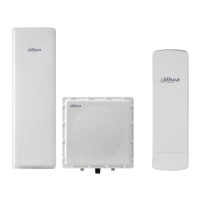
Do you have a question about the Dahua DH-PFM88 Series and is the answer not in the manual?
| Brand | Dahua |
|---|---|
| Model | DH-PFM88 Series |
| Category | Microphone system |
| Language | English |
Legal statement regarding copyrights, distribution rights, and trademarks.
Policies on product updates and manual revisions.
User responsibilities and Dahua's liability regarding cybersecurity risks.
Mandatory actions for improving cybersecurity.
Best practices for changing and managing device passwords.
Securing network access by managing ports and auto-login.
Implementing encryption, IP filtering, and access control for security.
Managing UPnP, SNMP, Multicast and checking logs for security.
Physical security and network isolation for devices.
Introduction to the manual and explanation of symbols used.
Requirements for safe transport, use, storage, and power.
Notes on manual usage, updates, contact information, and liability.
Document release details and the manual's purpose.
Glossary of terms and abbreviations used in the document.
Overview of DH-PFM88X series wireless equipment and its advantages.
Explanation of TDMA technology's role in enhancing performance.
Hardware watchdog and ping watchdog for system stability.
Support for expanded frequency bands and adaptability to harsh environments.
Detailed explanation of TDMA technology and its benefits in wireless access.
List of technical capabilities and features of DH-PFM88X.
Contents of the DH-PFM880 and DH-PFM881 packing lists.
Recommended applications for the wireless equipment.
Specifications of the hardware components and interfaces.
Explanation of the LED indicator lights and their meanings.
General diagram and guidance for installing DH-PFM88X equipment.
Detailed installation diagram for DH-PFM880 with component labels.
Detailed installation diagram for DH-PFM881 with component labels.
Explanation of port connections for DH-PFM88X devices.
Procedure for restoring the device to its factory default settings.
Table listing factory default settings for main parameters.
Configuration for establishing a point-to-point wireless connection.
Configuration for establishing a point-to-multipoint wireless connection.
Steps to adjust coverage to mitigate dead angles in wireless networks.
Table detailing network pairing configurations and settings.
Screenshot of the status display interface with key information.
Detailed table of parameters shown on the status display page.
Graph illustrating real-time throughput rate of the equipment.
Table showing the path pointing to the network of DH-PFM88X equipment.
Table showing MAC address and aging time of connected equipment.
Table showing IP address and MAC address mapping for LAN port.
Information displayed for clients connected in AP mode or APs in client mode.
Prerequisites for using the setting wizard.
Step-by-step guide for configuring the equipment using the wizard.
Screenshot of the equipment login page.
Screenshot of the status display page after login.
Initial screen of the configuration wizard.
Network configuration step within the wizard.
Wireless settings configuration step in the wizard.
Selection of working scenarios within the wizard.
Custom scenario configuration options in the wizard.
Explanation of parameters used in the custom scenario settings.
Final page of the wizard for saving and applying settings.
Screenshot of the main wireless settings interface.
Descriptions of Access Point, CPE/Client, and WDS Client modes.
Details of WDS AP mode, SSID, and frequency settings.
Configuration of output power, country code, channel width, and TX rate.
Implementing MAC filtering and wireless encryption for security.
Explanation of DH-PFM88X functioning as a router in route mode.
Screenshot of route mode settings interface.
Configuration of WAN and LAN port IP addresses and subnet masks.
Settings for DNS, gateway, and firewall for network protection.
Screenshot of the firewall configuration interface.
IP and MAC filtering rules for network access control.
Advanced settings for wireless performance optimization.
Optimizing wireless performance through ACK timeout, distance, and frame settings.
Configuring multicast, autonegotiation, duplex, LAN speed, and signal LEDs.
Managing configuration files and updating device firmware.
Managing device settings, login, language, and user accounts.
Screenshot of the main system settings interface.
Screenshot of the account information management section.
Tools for testing network connectivity and performance.
Tools for remote access, logging, time synchronization, and network monitoring.
Configuring ping test parameters like interval, failure, and startup delay.
Configuring Telnet, Syslog, NTP, and SNMP for system management.
Proposal for wireless surveillance in safe sites like construction.
Economical proposal for wireless surveillance in towns.
Overview of a comprehensive wireless coverage proposal.
Table of recommended models for full wireless coverage proposals.
System diagram for full wireless coverage proposal in safe towns.
Table of recommended models for wireless rural surveillance.
Troubleshooting steps for device startup failures and IP issues.
Troubleshooting wireless AP detection and low signal strength.
Analyzing reasons for high signal quality but low throughput.
Troubleshooting frequent packet loss, delay, and connection issues.
Antenna installation, geographical, and electromagnetic environment considerations.
Influence of climate and transmitted power on communication distance.
Strategies to avoid same and adjacent frequency interference.
Summary of tests and location for no occlusion wireless transmission performance.
Tools used for testing and results for 1KM distance.
Test results for 2KM, 5KM, and 10KM distances.
Graph showing throughput vs. distance at 20M bandwidth.
Graph showing throughput vs. distance at 40M bandwidth.
Details of tests performed with slight occlusion in Shanghai.
Map showing the test location in Shanghai for slight occlusion test.
Tools used for testing and results in downtown Shanghai area.
Graph showing throughput vs. distance in downtown area.
Detailed technical specifications for DH-PFM880 and DH-PFM881.